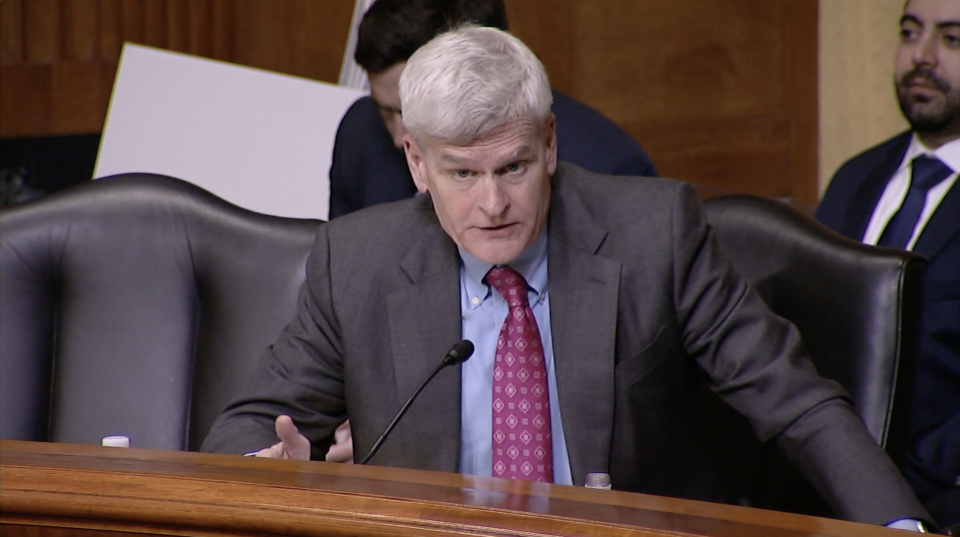Dec. 29
December 28, 2009Raphael ‘Ralph’ Chauvin Sr.
December 30, 2009In a move that marked a shift in statewide levee politics, Gov. Bobby Jindal and a wide-ranging consortium of local officials held a conference to tout recent and future coastal restoration efforts, and asked the U.S. Army Corps of Engineers to expedite the stalled Morganza-to-the-Gulf levee system.
The meeting on Thursday at the Terrebonne Waterlife Museum brought together levee officials and wetlands activists to promote a combined approach to coastal protection. The state plans to more than quadruple spending on coastal protection and restoration to $778 million next year. Jindal also announced that total state funding for Morganza had reached $250 million.
“I want to highlight that we have people from the environmental community, the business community, the levee community, everybody’s here today, because everybody supports providing a resilient Terrebonne Parish,” said Garret Graves, director of the Governor’s Office for Coastal Activity. “We are ensuring every bill that provides hurricane protection, also ensures a sustainable coastal Louisiana.”
For years, there has been tension between wetlands activists and levee proponents. Conservation groups would say that levees destroy ecosystems that provide better storm protection. Levee boards, in turn, would charge that wetlands proponents obstructed the building of much-needed levees.
After years of wrangling, many have decided that a combined approach offers the best defense against flooding from hurricanes.
“The general public is now becoming convinced that the proper hurricane protection is a combined effort of levee construction and restoration of the barrier islands off of our coast,” said Terrebonne Parish Council Chairwoman Arlanda Williams. “The two projects must go hand and hand.”
The governor’s office has taken notice as well. According to Graves, there used to be five separate agencies that controlled hurricane protection and coastal restoration in Louisiana. They’ve all been consolidated into one agency: the Louisiana Coastal Restoration and Protection Agency.
“Instead of just being about flood protection or coastal restoration, it’s about sustainability and resilience, and that’s what we’re focusing on,” he said. “We’ve totally integrated everything in the state and it allows us to take a systems based approach.”
Integration on a state level has reached the point where funding for the two issues are spoken in the same breath.
“We’re going to spend more than $778 million on coastal restoration and hurricane protection efforts in 2010 alone,” said Jindal. “Whether it’s the oil and gas off of our coast, the 30 percent of the nations fisheries, or the fact that they spend hundreds of millions of dollars after these storms to restore and rebuild communities, it just makes sense to restore the coast, to rebuild the wetlands, and also to invest in hurricane and flood protection”
The centerpiece of the event was a proposed lock structure on the Houma Navigation Canal. The lock is seen as very beneficial to both wetlands restoration and flood protection. However, with a $400 million price tag, it would be next to impossible to build without federal funding.
The project could be built prior to the rest of the Morganza system because it was authorized by congress as part of a different project that has completed the study phase. The project just needs funding from Congress and the will of the corps.
“We’re officially requesting the corps of engineers joins Louisiana, our parishes and our levee districts on the construction of the authorized and funded Morganza-to-the-Gulf project,” said Jindal. “This project has been authorized three times. It’s been funded. We don’t need studies, we need the federal government to join us in a partnership.”
The idea of combining coastal restoration and levee protection systems has even gained a foothold in the White House. Nancy Sutley, the chairwoman of the White House Council of Environmental Quality toured southern Louisiana and Mississippi last week.
“I think it makes sense, this idea of multiple lines of defense,” said Sutley. “Not just levees, not just fresh water diversion, not just using sediment to build back up the wetlands, but probably some combination of all of those things.”
According to Sutley, the findings of her trip will help influence the president’s environmental agenda. She also said that as part of the White House, her organization can coordinate across government agencies to get work done.
“I think one of the things that we found to be very encouraging was the level of consensus and cooperation among the communities in southern Louisiana that it is going to take all kinds of techniques, and it’s the smart way to provide storm protection and reduction of risk,” she said.
Several local levee officials were glad to see Steve Peyronnin of the Coalition to Restore Coastal Louisiana at the event. Peyronnin’s group has often opposed the Morganza project and the levee district’s attempts to build an interim system due to environmental concerns. As recently as Nov. 7, the group has objected to permits for the levee district, saying they did not give enough information on environmental impact.
“I feel confident that that coastal restoration is certainly a priority for the parish, and the levee and conservation district. It’s a priority for us as well,” said Peyronnin. “We have differing views at times, but we’ve had a good dialogue to discuss what’s the best way to resolve this.”
Peyronnin also said that the most important and beneficial part of the Morganza system was the lock on the Houma Navigation Canal.
“If you’re talking about south of the alignment, I think you’ve got some real challenges in terms of the resources you have available to implement large scale restoration,” said Peyronnin. “That’s why the lock is such an essential part to restoring the hydrology to what it should be to protect what still remains.”
Terrebonne Parish Levee District director Reggie Dupre, the man charged with overseeing the construction of the interim levee system without the help of the federal funds, agreed that the lock is a vital part of the system. He also said that the ideas of both camps are beginning to merge.
“I think we’ve always agreed with 90 percent of our goals,” said Dupre. “Everybody’s starting to realize the integrated approach is the best approach.”
To Terrebonne Parish Councilwoman Arlanda Williams, losing land to the sea is no different than losing land to war.
“The intervention of federal government in helping to combat the terrible force of Mother Nature should be no different than a foreign government attempting to steal United States’ soil. The Gulf of Mexico takes considerable land from Terrebonne Parish and actually shrinks the size of the United States,” she said. “The New Orleans Saints are on an unbelievable winning streak due in part to the tremendous energy we have all put forth to show them we support our team. By joining together, we can win. We must use the same level of resolve to band together and win the war on coastal erosion.
Gov. Bobby Jindal addresses a crowd at a press conference on Thursday. “We’re going to spend more than $778 million on coastal restoration and hurricane protection efforts in 2010 alone,” said Jindal. * Staff photo by MICHAEL DAVIS










